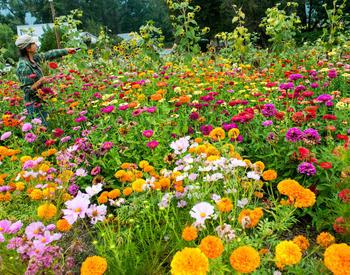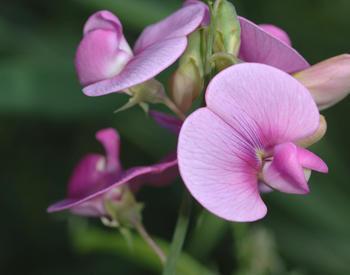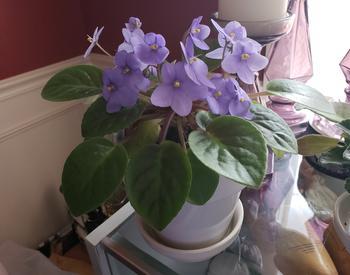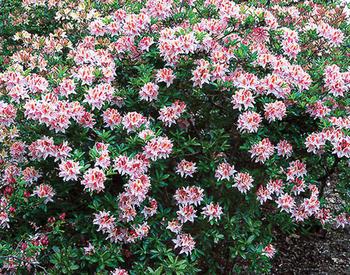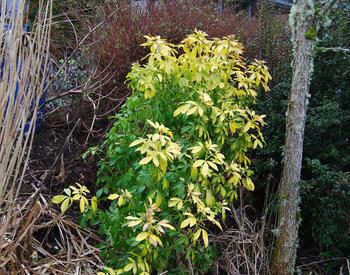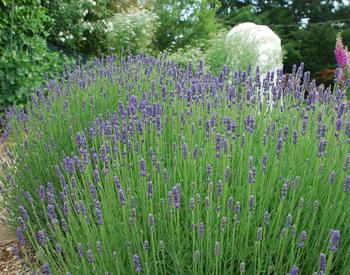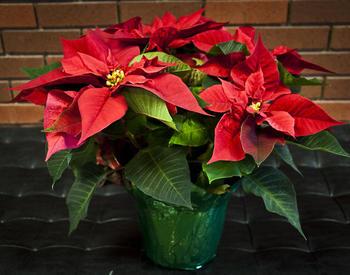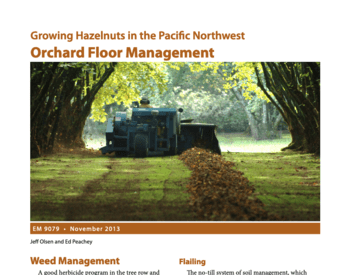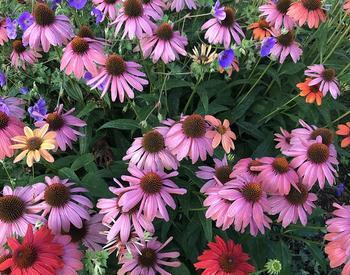CORVALLIS, Ore. - Even if you've decided to reduce the water you use for watering your garden and yard, you should still be able to find just the right tree to suit any garden spot you have in mind.
Oregon's climate may be stressful to trees that haven't developed and adapted to it, explained Steve Renquist, horticulturist with the Oregon State University Extension Service.
"On the west side of the mountains, we have six months or more with saturated soils followed by five months of bone dry soils,” Renquist said. “The combination of too wet and too dry is not easy for most trees."
Native trees have already adapted to these conditions, where many non-native trees might not be. And stressed trees are more susceptible to disease and poor growth. Many of western Oregon's native hardwood trees are drought-tolerant and do well in an urban landscape, said Renquist.
Big leaf maples are fast-growing shade trees that produce greenish-yellow flowers in the early spring and bright green leaves the size of dinner plates by June.
Oregon white oak, also known as Garry oak, is slow growing, with dark green foliage. It tends to collect moss and lichen on his twisting limbs for interesting visual effects in the winter.
Tanbark-oak, which isn't a true oak, is a smaller, shade tolerant evergreen tree. It has oval, dark green leaves, not the classic lobed oak leaf. It produces acorns in the fall.
Vine maple is a good choice for a moderately drought hardy native. When it is in full sun it can really suffer in a dry site, but it is moderately drought hardy when in the shade."
Few trees are as strongly associated with the Pacific Northwest as the native madrones. Their dark evergreen foliage and peeling reddish bark make them instantly recognizable and prized for their identification with the region. On the other hand, they're notoriously difficult to transplant, and their peeling bark and seemingly constant leaf shedding may make them unsuitable for gardeners who demand a tidy garden.
The chinquapin is similar in appearance to the madrone. A relative of chestnuts and oaks, it's also evergreen.
The following native conifers are suitable for water-wise garden use on both sides of the Cascades:
The ramrod straight Ponderosa pine and the much smaller shore pine are both drought tolerant and relatively fast growing. The Ponderosa pine often reaches 100 feet; the shore pine, 35 feet.
Incense cedar (Calocedrus decurrens), pungently fragrant in warm weather, has a narrow conical shape and grows to 90 feet or so. It has dense, dark green foliage that makes it suitable for planting in a row to form a screen.
"There are also many non-natives trees that work fine for homeowners as drought-tolerant stock," says Renquist. "A homeowner does not have to give up anything – size, flowers, bark beauty, shade – to plant water-wise trees."
Non-native drought-tolerant trees include flowering trees like mimosa, ornamental (non-fruiting) pear, and eastern redbud; deciduous shade trees like catalpa, ginkgo, honey locust, silver maple, mulberry, and hornbeam; and conifers like Atlas cedar, Deodar cedar, Swiss stone pine, and giant sequoia.
For best results, plant drought-tolerant trees with other drought-tolerant plants in the garden. Don't surround them with lawn, shrubs, groundcovers, perennials or annuals that need frequent watering.
Even drought tolerant trees that are planted in a garden setting need to be nurtured for their first year or so. They'll undergo less stress if planted in late winter or early spring rather than in the summer heat. And through the first year, it's best to protect a new seedling or sapling from extremes of heat, drought, cold and wind.
"To choose the right water-wise tree, focus on the right plant in the right place within each landscape," advised Renquist. "Ask yourself, will it be in shade, full sun, a wet site, a dry site, under power lines, in a big space or small space? Does it need to be deciduous or evergreen? Chances are good you'll be able to find a water-wise tree you like that fits your needs.
"You may need to visit a nursery specializing in natives of the Pacific Northwest to find our plant recommendations," he added. “To find a native plant nursery, visit or call your local county office of the OSU Extension Service."
